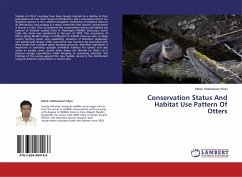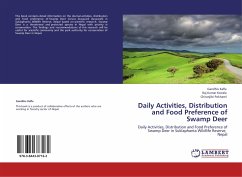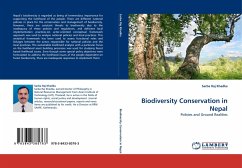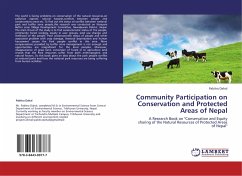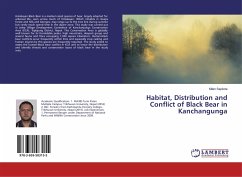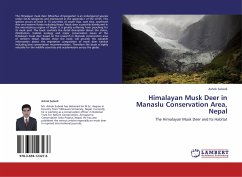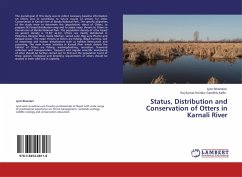
Status, Distribution and Conservation of Otters in Karnali River
Versandkostenfrei!
Versandfertig in 6-10 Tagen
32,99 €
inkl. MwSt.

PAYBACK Punkte
16 °P sammeln!
The overall goal of this study was to collect necessary baseline information on Otters and to contribute to future course of actions for Otter Conservation in Karnali river of Bardia National Park. The specific objectives of the study were to determine the (population) status of Otters, to prepare GIS based distribution map and to assess major threats to Otters in Karnali river of Bardia National Park. The population density of otter based on spraint density is 15.87/ sq.km. Otters are mostly distributed in Patkanua, Banjaria Ghat, Gaida Machan, Lamak Lake, Bag aura Phanta and Helipad Areas. T...
The overall goal of this study was to collect necessary baseline information on Otters and to contribute to future course of actions for Otter Conservation in Karnali river of Bardia National Park. The specific objectives of the study were to determine the (population) status of Otters, to prepare GIS based distribution map and to assess major threats to Otters in Karnali river of Bardia National Park. The population density of otter based on spraint density is 15.87/ sq.km. Otters are mostly distributed in Patkanua, Banjaria Ghat, Gaida Machan, Lamak Lake, Bag aura Phanta and Helipad Areas. The major threats to Otters are fishing, illegal hunting, lack of awareness and human disturbances such as habitat destruction and poisoning. The main human activities in Karnali River which disturb the habitat of Otters are fishing, washing/bathing, recreation, firewood collection and transportation. Frequent and regular scientific monitoring of otter should be further carried out to find out the population trend of these species. Ecological and breeding requirements of otters should be studied in both wild and in captivity.



